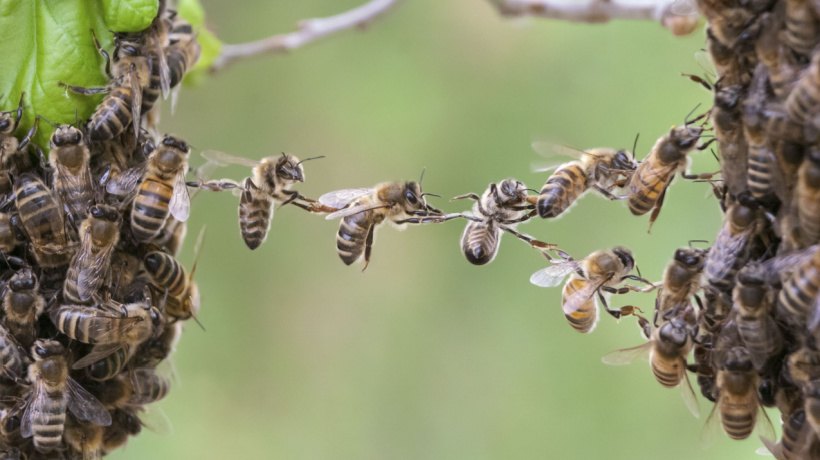6 Tips To Become A Buzz-Worthy Leader
Although small, bees play an incredibly important role in our lives. With more than 25,000 species buzzing around the world, bees pollinate the majority of flowering plants and more than half of crop seeds. As a result, they gift us with the most common food groups, all while helping maintain balanced ecosystems. At the top of this successful and hard-working team we find the queen bee, a stoic leader tasked with providing strong workers and maintaining the unity of the hive. On this World Bee Day, we talk about the leadership lessons we can acquire by observing the queen bee and the way she keeps her beehive productive.
6 Leadership Lessons We Learn From Flourishing Bee Hives
1. Distribution Of Authority
The queen bee is the heart and soul of the bee colony. However, with thousands of workers under her command, you can't expect her to be the sole leader. On the contrary, beehives operate on a more democratic system that promotes the decentralization of authority. By dividing the decision-making process, different groups of bees have more time to focus on their specific tasks, thus being more effective. For example, when forager bees discover new sites, they don't have to take that decision back to the queen for approval. Similarly, if you want to lead your organization to success, you must embrace the "divide and conquer" motto by empowering your team leaders to make their own decisions and take ownership of their teams.
2. Communication And Information Sharing
Bees are known to communicate with each other using various methods. First of all, they use the infamous waggle dance to indicate the location of a foraging site, as well as vibrations and pheromones to convey more complex messages. Open communication among members of the hive helps them maintain clear objectives and work in unison to achieve them. To make up for our lack of expressive dance moves, we humans have come up with many effective ways to communicate both face-to-face and long-distance. Don't forget to use your communication tools to keep your employees updated regarding the organizational vision and goals. This will increase employee engagement and ensure that they are motivated to perform their best.
3. Cooperation Is Key To Success
While we're on the subject of teamwork and communication, let's talk about another crucial leadership lesson: cooperation. You see, an average worker bee produces about one-twelfth of a teaspoon of honey throughout their entire lifetime! It takes thousands of bees combining their efforts to produce all the honey the hive needs to survive. In an organization, it can often seem as if a person's efforts don't offer enough to the end goal. However, leaders must remember and also remind their teams that this isn't true. Great results can be achieved when teams work together with a common goal in sight.
4. Sustainability
Bees are very careful about the flower patch they choose. Even though one would expect that they go for the most productive sites, that is not the case. Specifically, whereas they can identify the most productive regions, they make sure not to overexploit them. In addition, they are always prepared for sudden declines in the nectar of highly productive locations by assigning resources to other sites as well. This is a good reminder for leaders not to focus only on short-term benefits. Keeping sustainability in mind, they can come up with solutions that ensure the long-term success of their business.
5. Leveraging Experience
Bees are very inclusive when it comes to the ages of the bees that form part of the colony. And although they appreciate the stamina and strength of young bees who can tirelessly fly and pollinate flowers all day long, they also appreciate the wisdom and accumulated knowledge of older bees. In fact, novice forager bees are often sent to the fields accompanied by a veteran bee who can teach them effective ways to perform their work. Therefore, a leadership lesson we can extract is that striving for modernization is not the only way to success. A good leader must also appreciate the different perspectives and ideas people of different ages and backgrounds have to offer.
6. Leaders Serve The Team
At first glance, the queen bee might seem like the overlord of the hive—never emerging from her nest while a swarm of worker bees tends to her, feeds her, and takes care of her every need. But in reality, the queen is also an indispensable servant of the hive, constantly laying eggs to ensure that the colony has enough workers to survive. As a result, worker bees pay close attention to her and are very sensitive to changes in her performance. And when she's no longer beneficial to the colony, they are quick to replace her. Therefore, we can see that the worker bees determine the queen's ability to lead and not the other way around. This is a not-so-small detail that leaders in organizations tend to forget. They are there to serve the common goals and not be served by their employees.
Conclusion
There is so much we can learn from bees in terms of teamwork, persistence, devotion, and more. In this article, while discussing the various leadership lessons we can learn from the queen bee, we realized that she is not your typical leader. She distributes authority and values communication and cooperation above all else. But most importantly, she devotes herself to her minions and helps them create a thriving and sustainable colony. Feel free to share what you have learned from our small friends that you can put to the test in your organization. Where else do you get inspiration to maximize the success of your business?









